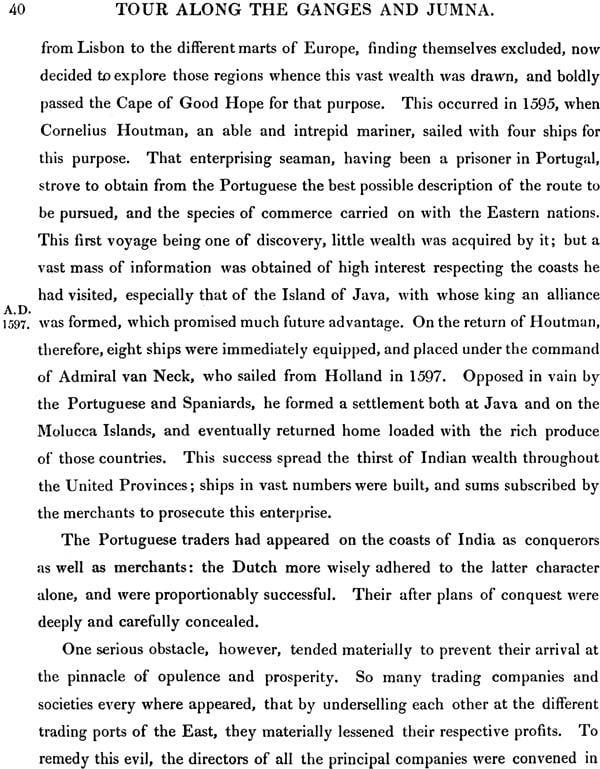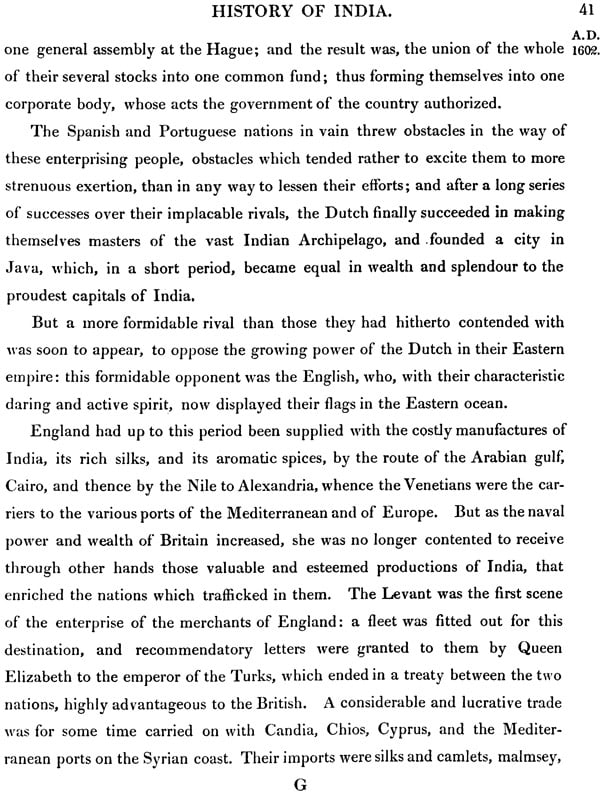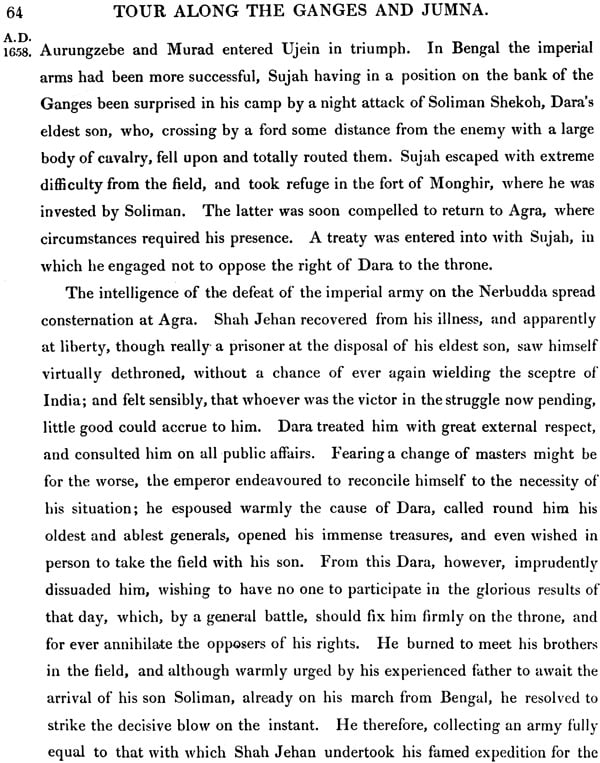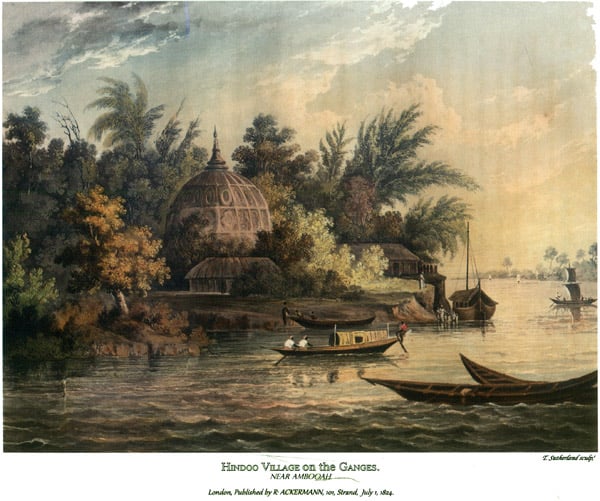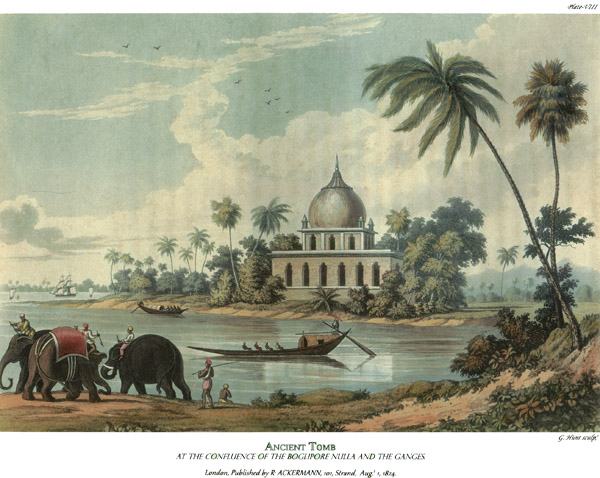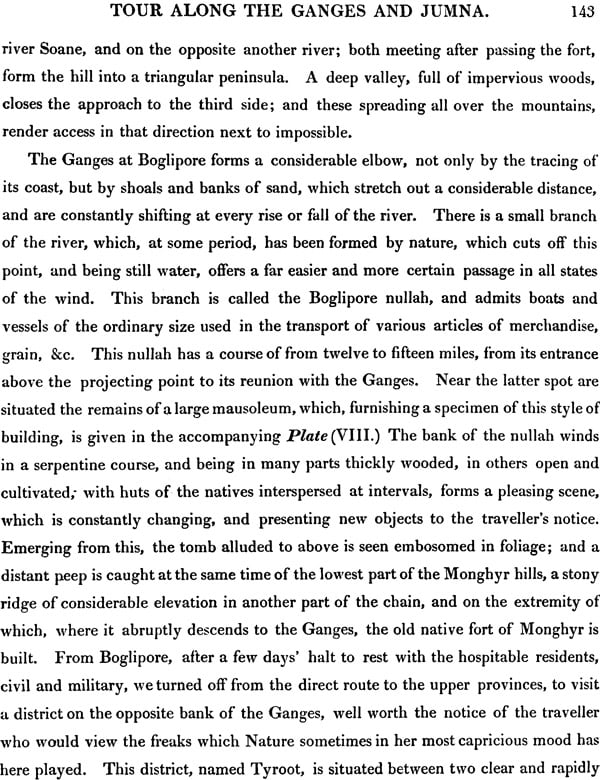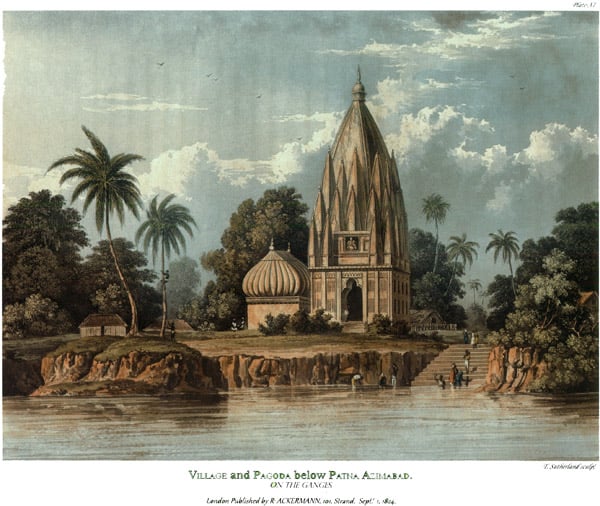
A Picturesque Tour Along The Rivers Ganges and Jumna in India
Book Specification
| Item Code: | NAK660 |
| Author: | Prof. Lokesh Chandra |
| Publisher: | Niyogi Books |
| Language: | English |
| Edition: | 2015 |
| ISBN: | 9789383098729 |
| Pages: | 191 (24 Color Illustrations) |
| Cover: | Hardcover |
| Other Details | 12.0 inch x 8.5 inch |
| Weight | 1.30 kg |
Book Description
Foreword
A work that reminds of the caravan of wanderings through history's paths, and how the sun of human development over two centuries has driven away the gloom of life, eventually opening up resplendence. This memoir chronicles a sparse population, structures shattered by time, and roving officials of the British Crown trying to comprehend the mysteries of the vast land of India with its divine dignity conversing with ruins of imposing architectural buildings. Lt Col. Forrest made coloured drawings of ancient monuments on the spot to see the beauty of their inner form beyond what is seen by the bodily eye. These twenty-four coloured views are reproduced in the depth of, 19th century etchings and give us a glimpse of India as it once was in the mists of time. The author wanted to excite the interest of the British people in the "manners of that wonderful empire" from "its gradual rise to a splendour rarely attained by nations, and thence to its sad and disastrous decline and downfall". The brief survey of the history of India is an inspiration as well as a challenge to introspect and to carve out a glorious destiny. Some facts given by Forrest have become obsolete, but the work as a whole summons us to a journey into creativity and to selfhood. The ancient shores have to scintillate in modem waves.
The splendid plates of Hindu temples and villages on the holy banks of Ganga, Murshidabad the capital of mediaeval Bengal, or mountains of Rajmahal where they descend to the Ganga, or the Fall of Pearls in the Rajmahal hills, are all part of Forrester' s "tour of Ganga and Yamuna". Ganga is mentioned in the Rigveda, but she assumes great sanctity in the Puranas. She is the daughter of Himavat and Mena and the mother of the Eight Vasus who are personifications of natural phenomena and the elements: Pratytisha "light", Prabhasa "dawn", Dhruva "Pole Star", Soma "Moon", Anila "wind", Anala "fire", Dhava "earth" and Apah "water". The water of the Ganga is elixir and a bath in it purifies one of sins. The Ganga- Yamuna confluence in the Sangam at Prayaga (Allahabad) is where the relics of every Hindu find their final rest. The account of Forrester subsumes that the control of this basin of the two rivers with its large population enabled the British to contend against the French and raise the Empire. The symbol Ganga- Yamuna appears as an architectural motif in early Gupta temples at Bhumara (4th century AD) and on their coins. Both rivers were enshrined as goddesses by the Rastrakutas, Eastern Chalukyas, Gajapatis of Orissa, in Vijayanagara and Andhra Pradesh. Lt. Col. Forrest has gathered pearls from the shorelines of history in his evocative etchings where we hear a song that transcends the forgotten. In the etchings we refresh the mindscape, the silence of the landscape, to resume our interrupted journey, enlivened by new echos vibrating with life, lightening the shadows and silences, in interaction between technological progress and socio- cultural inheritance.
This book is an engrossing account of the mediaeval period of Indian history and given a racy idea of the storm of attacks, plunders, dreadful massacres, internecine conflicts of the princes to grab power, the magnificent regalia of the Lucknow monarchs, the amazing distances, the daring and active spirit of the English that inspired its merchants to establish direct trade with India leading to the British Raj: an evocative and spell-binding account of the Islamic and East India Company periods. Lt. Col Forrest recounts his picturesque tour in equally striking words and we become his fellow travellers from Calcutta to Agra where he is entranced by the Taj Mahal "this wonder of the world". He left Calcutta on 2 December 1807, and drew his first art work of a Hindu temple below Barrackpore on the expansive bosom of the Ganga. Passed a night on the celebrated battlefield of Plassy where Lord Clive totally defeated the Nawab of Murshidabad. About to enter Bihar, he recalls this wonderfully fertile tract as Prasa (Prachi in Sanskrit) and Gangaridae of the Greek historians. He is impressed by "the grandeur of the appearance which the city of Benares exhibits as seen from the river in its solemn sanctity". He is on his way to Allahabad, ranked equally with Benares, where mingle the mighty bulk of waters of the great rivers of Ganga and Yamuna and the subterranean Sarasvati. He is in Kannauj whose ancient opulence and splendour has passed away like the traces of a dream. Thence to Kanpur the headquarters of the Field-command in Bengal. At the Surseya bathing ghat on the Ganga River he is bewitched by the dripping garments of the ladies emerging from a sacred bath: "India's daughters, rising thus like Naiads of the flood from the bosom of their adored river, their finely wove simple garb, ... clinging closely to their figure, exhibit a symmetry of form which might fairly vie with the Medicean". At Agra, he looks with wonder "the stupendous and noble fortress" of Akbar, and reminds us that it is mentioned by Ptolemy as Agara. He speaks of Akbar's dazzling scenes of martial glory and the magnificence of his palaces. Akbar wanted to change the name of Agra to Akbarabad but that was not to be. The tour of Forrester closes "with the description of this wonder of the world", the Taj. This book is a "must read" to feel the silent footsteps of the British might taking over and their wonderment at the historic splendour of our centuries. Little did they know that the darkness of foreign rule will one day see Light and they would have led us to a world of new concepts of power and polity. In the years to come this creative leap will whisper in our deeds: "I am a drop of nectar with tomorrows inside."
Preface
IT is with some feeling of diffidence that the author of the following pages ventures to submit to the notice of the British public this his first effort. He trusts, however, to that indulgent consideration and that encouraging approbation which, on all occasions, distinguish his countrymen in their judgment on works of science or of art.
It was thought advisable by the author, with the view to excite the attention and increase the interest of such of his readers as are little acquainted with India, to give a correct but very compressed sketch of the history, customs, and manners of that wonderful empire. In this he has passed over no one event of importance, from its first origin in the gloomy clouds of superstition, through its gradual rise to a splendour rarely attained by nations, and thence to its sad and disastrous decline and downfall. It is therefore hoped that the following pages will be found to comprise a connected and satisfactory detail, extracted with much attention and labour from the best and most esteemed authorities, containing in its essence the matter of many large volumes.
With respect to the picturesque description of the Tour, the author can with perfect confidence appeal to those who have passed through the same scenes.
Contents
| Foreword | vii |
| Preface | xiii |
| Directions for Placing the Plates | xv |
| Tour Along the Ganges and Jumna / History of India | 1 |
| Tour Along the Ganges and Jumna | 123 |
